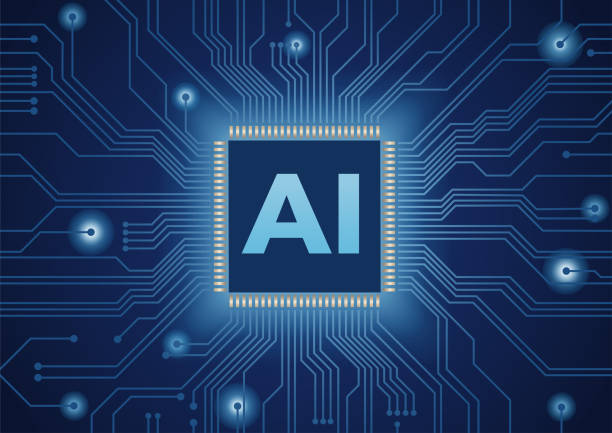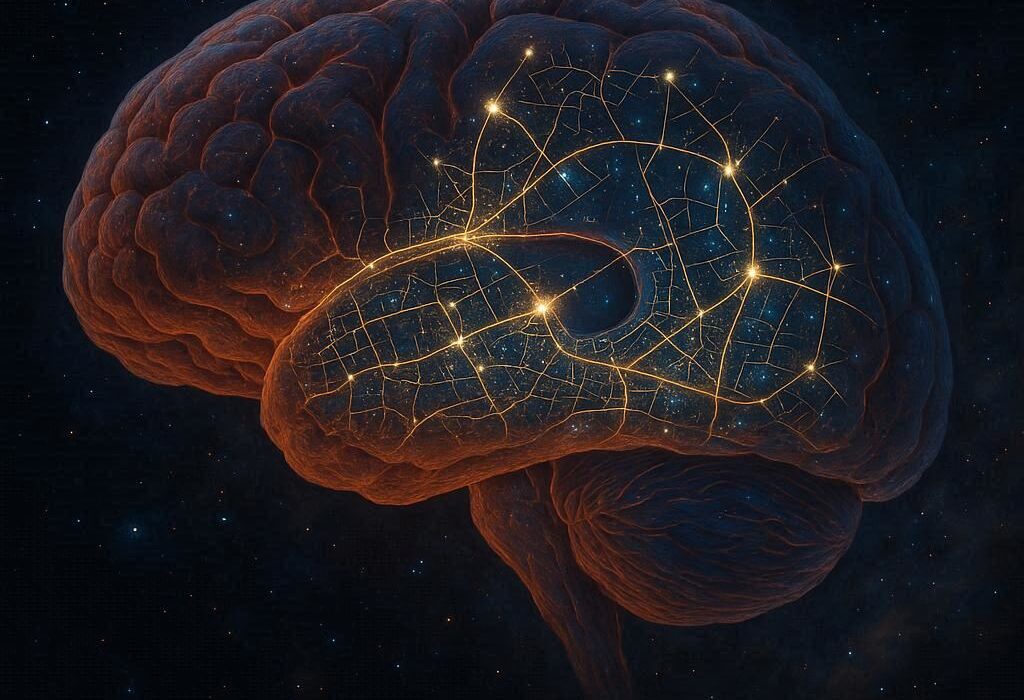Artificial Intelligence (AI) isn’t some distant dream of the future—it’s already here, quietly shaping our world. Every time you unlock your phone, shop online, or ask your digital assistant a question, you’re interacting with a vast web of algorithms that observe, learn, and make decisions on your behalf.
The truth is, AI has already become the invisible force behind our daily lives. It anticipates our needs, filters what we see, influences what we buy, and even predicts our emotions. This isn’t science fiction—it’s the reality of the 21st century.
Let’s explore the ten most profound ways artificial intelligence is already controlling, guiding, and transforming the way we live—often without us even noticing.
1. AI Knows What You Want Before You Do
Have you ever wondered how your favorite streaming platform always seems to know what you’ll enjoy watching next? Or how your online shopping app recommends the perfect item just when you need it? That’s not luck—it’s AI prediction at work.
Recommendation algorithms on platforms like Netflix, YouTube, Amazon, and Spotify analyze enormous amounts of behavioral data: what you click, how long you linger, what you skip, and even what time of day you interact. They build detailed profiles of your preferences and habits, then use machine learning models to predict your next move.
Netflix’s recommendation system, for example, reportedly saves the company over a billion dollars a year by keeping users engaged. Spotify uses AI to curate playlists that feel eerily personal, while Amazon’s algorithms push products that align perfectly with your browsing and buying history.
Over time, these systems learn so much about your tastes that they often predict what you want before you consciously realize it yourself. Your “choices” are often subtle nudges orchestrated by intelligent systems fine-tuned to your behavior.
2. AI Shapes What You See Online
Every time you scroll through your social media feed, artificial intelligence is deciding what you see—and what you don’t.
Platforms like Facebook, Instagram, TikTok, and X (formerly Twitter) use AI-driven algorithms to curate content. These algorithms are optimized for one primary goal: to keep you engaged as long as possible. They learn from every like, share, and comment to craft a personalized feed designed to capture your attention and emotions.
This system is incredibly powerful—and potentially manipulative. It not only determines which friends’ posts you see but also which political opinions, world events, or ads you’re exposed to. Over time, AI can subtly influence your beliefs, habits, and even your worldview.
The personalization feels convenient, but it creates what psychologists call an “echo chamber”—a digital world shaped by your existing opinions and behaviors. You think you’re freely exploring information, but AI has already mapped your preferences and built the walls around what you see.
3. AI Is Watching You Through Cameras and Sensors
Surveillance cameras are no longer passive recorders—they’re intelligent observers powered by AI. Around the world, AI-driven facial recognition systems are transforming the way security, law enforcement, and even retail businesses operate.
Modern AI can identify individuals in real time, recognize emotions, and detect suspicious behavior. In airports, cameras equipped with AI help identify potential threats. In cities, facial recognition tracks criminal suspects. In retail, it analyzes customer demographics to tailor marketing strategies.
Some smartphones and home devices also use AI-powered vision to unlock screens or monitor surroundings. While these technologies enhance convenience and safety, they also raise profound questions about privacy.
You may not notice it, but your face, your movements, even your expressions are being analyzed by machines that “see” and interpret far more than human eyes ever could. Whether it’s for security, advertising, or analytics, AI is watching—and learning—constantly.
4. AI Drives Your Daily Commute
Whether you drive, walk, or use public transport, AI plays a critical role in how you move through the world.
Navigation apps like Google Maps, Apple Maps, and Waze rely on AI to analyze live traffic data, predict congestion, and recommend the fastest routes. These systems use machine learning to process vast amounts of information from smartphones, traffic sensors, and satellites—constantly optimizing in real time.
If you drive a modern car, AI is inside your vehicle too. From adaptive cruise control to automatic braking and lane assistance, machine learning ensures safety and precision. Tesla’s Autopilot and other self-driving technologies use deep neural networks trained on millions of driving scenarios.
Even in public transport, AI optimizes schedules, predicts maintenance needs, and analyzes passenger flow. You might think you’re in control of your commute, but in reality, AI is the unseen navigator orchestrating every move to keep the world’s traffic flowing.
5. AI Understands Your Voice—and Your Emotions
When you say, “Hey Siri,” “Alexa,” or “OK Google,” you’re not just talking to a piece of software—you’re engaging with an AI system trained to understand, interpret, and even anticipate your needs.
Voice assistants use a combination of natural language processing (NLP), speech recognition, and machine learning to decode human language. They can recognize accents, adjust to tone, and even detect emotion.
AI doesn’t just process words—it understands intent. When you ask for a weather update, set a reminder, or play a song, the AI interprets your command and connects it to a web of data sources to give the right answer.
But there’s another layer: emotional AI. Companies are developing systems that analyze voice pitch, pace, and pauses to infer mood—whether you’re happy, stressed, or frustrated. These insights are increasingly used in customer service, marketing, and even healthcare.
Your voice reveals more about you than you think—and AI is listening closely.
6. AI Decides What You Buy
In the world of e-commerce, AI is the invisible salesperson guiding your every purchase. From the moment you search for a product to the instant you click “Buy Now,” algorithms are influencing your decisions.
Online retailers use AI to analyze purchase history, browsing patterns, and even the time you spend looking at specific products. This information feeds into recommendation systems that decide which products appear first in your search results or which discounts you see.
Price optimization is also handled by AI. Airlines, hotels, and retailers use dynamic pricing algorithms that adjust costs in real time based on demand, location, and even your browsing behavior.
In essence, AI personalizes your shopping experience—not just to make it convenient, but to make it irresistible. It taps into psychology, nudging you toward purchases that maximize profit while feeling like personal choices.
Even in physical stores, AI is at work. Smart shelves, predictive inventory, and emotion-tracking cameras all play roles in shaping how you shop. The next time you think you’ve found a “great deal,” remember—an algorithm may have planned that moment long before you did.
7. AI Knows Your Health Better Than You Do
Healthcare is undergoing an AI revolution—and it’s both awe-inspiring and deeply personal.
AI systems are being trained to detect diseases faster and more accurately than human doctors. From reading X-rays and MRIs to identifying early signs of cancer or heart disease, machine learning models are transforming diagnosis.
Apps on your smartphone or smartwatch also use AI to monitor health metrics—heart rate, sleep quality, physical activity, and even mental wellness. Apple’s Health app, Fitbit, and other platforms collect vast amounts of biometric data that can predict trends and detect anomalies.
In hospitals, AI predicts patient outcomes, manages hospital resources, and even assists in robotic surgeries. During the COVID-19 pandemic, AI helped track infection patterns, identify mutations, and accelerate vaccine development.
But this power comes with responsibility. As AI gains more access to personal health data, questions about privacy, consent, and data ownership grow increasingly urgent. The machine may help you live longer—but it might also know more about your body than you ever will.
8. AI Is Reading Your Emotions and Influencing Your Mind
AI is not only learning what you say—it’s learning how you feel.
Emotion recognition technology is now embedded in customer service systems, educational platforms, and even marketing campaigns. Cameras can analyze facial expressions, posture, and micro-reactions to infer emotional states.
For example, an advertisement might adjust based on your perceived mood. A customer service bot might use empathy-based algorithms to tailor its tone. In classrooms, AI can monitor students’ attention and engagement levels.
Social media platforms also use emotional AI to study user responses. Every emoji, reaction, or pause in scrolling is a data point that helps algorithms understand your mental state. This knowledge is then used to keep you emotionally hooked—whether through humor, outrage, or nostalgia.
In effect, AI doesn’t just understand your emotions—it can manipulate them. This silent control over human attention and emotion is one of the most powerful—and least understood—forces of our time.
9. AI Is Choosing Your News and Shaping Public Opinion
The information you consume is no longer decided by editors or journalists—it’s curated by algorithms.
AI determines which news stories trend, which headlines appear on your feed, and even the order in which you see them. This personalized delivery system tailors content to your interests, but it also amplifies polarization by feeding you only what aligns with your views.
Platforms like Google News, Facebook, and TikTok rely on engagement-driven algorithms to prioritize what’s most clickable—not necessarily what’s most accurate. The result is a world where information is filtered through machine learning models that optimize attention over truth.
Even political campaigns now rely heavily on AI. Predictive analytics and microtargeting use personal data to craft highly specific messages designed to sway individual voters. In many ways, AI has become the invisible hand shaping collective thought and democracy itself.
The power to control information is the power to control perception—and AI wields that power every time you scroll through your newsfeed.
10. AI Is Writing, Creating, and Thinking with You
We are entering a new era where creativity itself is shared with machines. From music and art to journalism and design, AI is becoming both a collaborator and a competitor.
Large language models like ChatGPT, image generators like DALL·E, and video synthesis tools can create human-like content in seconds. These systems learn from massive datasets of human expression, allowing them to mimic style, tone, and imagination.
Writers use AI to brainstorm ideas, musicians generate melodies with algorithms, and filmmakers employ AI to design visual effects. It’s changing how we define creativity—and what it means to be original.
Yet, this blending of human and artificial creativity raises profound ethical and philosophical questions. Who owns an AI-generated painting or a poem written by a machine? Can creativity exist without consciousness, or does AI simply remix what humanity has already made?
Regardless of how we answer, one truth is undeniable: AI is no longer just a tool—it’s becoming a creative partner, reshaping human expression in every form.
The Hidden Hand of AI
Artificial Intelligence is not a single invention—it’s an ecosystem, an evolving network of algorithms and data shaping nearly every moment of modern life. From how we think to how we love, from our morning routines to our political beliefs, AI is there—silent, adaptive, and deeply intertwined with our existence.
The paradox is that AI’s control often feels like convenience. It helps us navigate, communicate, shop, and learn. It simplifies our lives while subtly guiding our decisions. And because it works so seamlessly, we rarely question its presence.
But control doesn’t always mean domination. The real challenge lies in awareness—understanding where AI ends and human choice begins.
The future will not be a battle between humans and machines. It will be a dialogue—a delicate balance of trust, transparency, and responsibility. If we learn to see the invisible strings that guide our digital world, we can choose how they move us.
AI may already control much of our lives, but the most important power still lies within us: the ability to question, to decide, and to remain conscious in a world increasingly governed by code.






